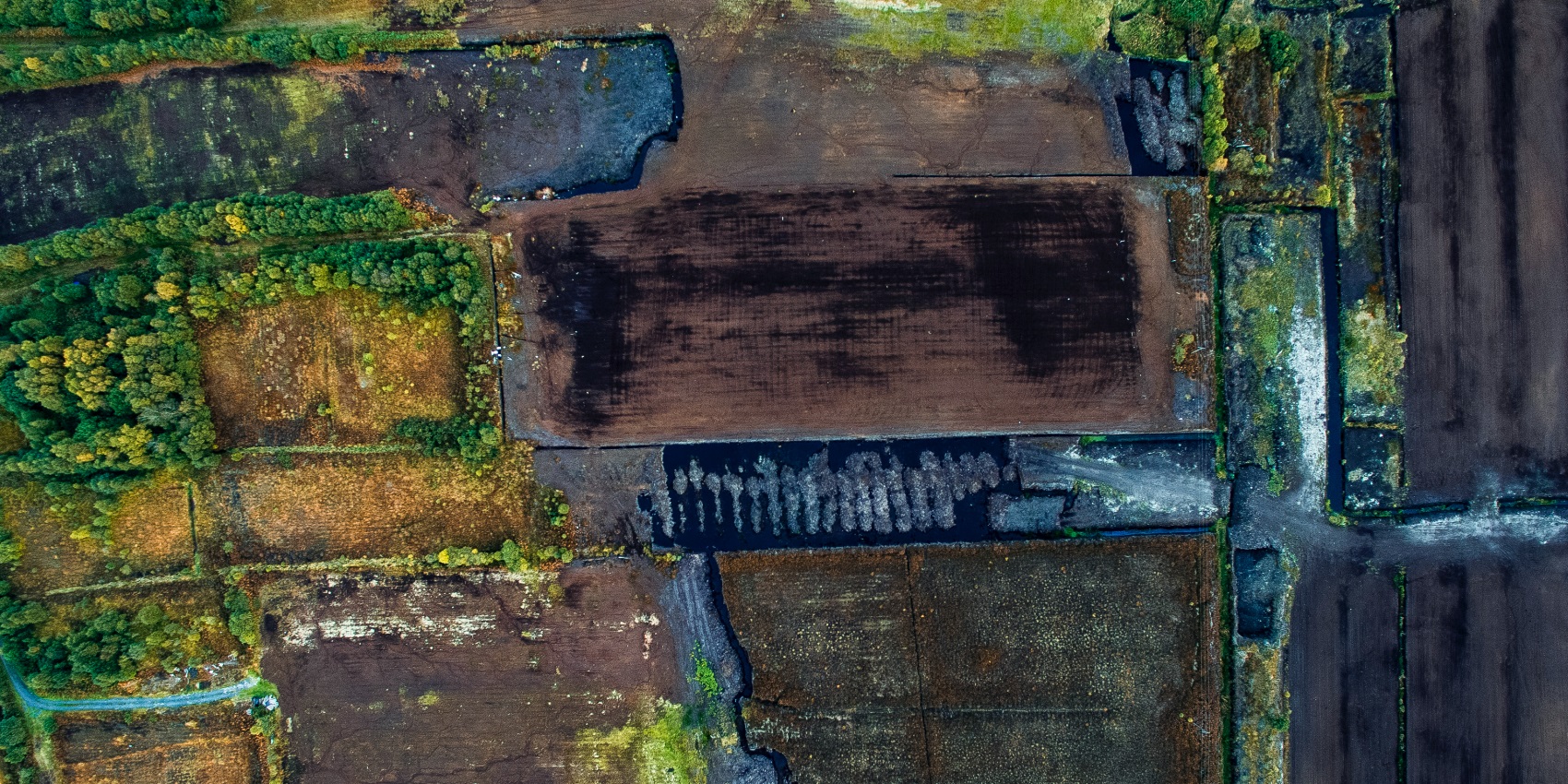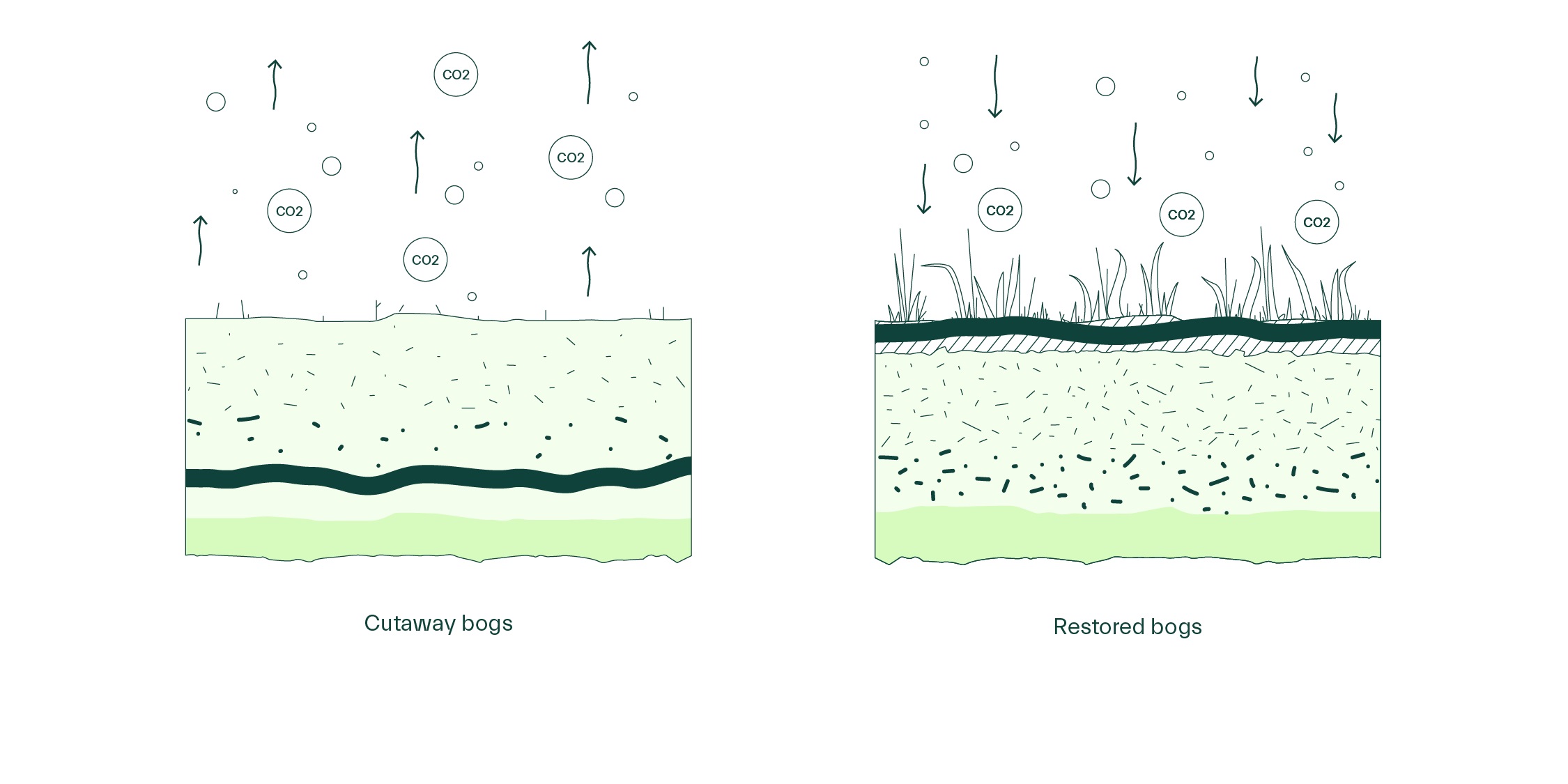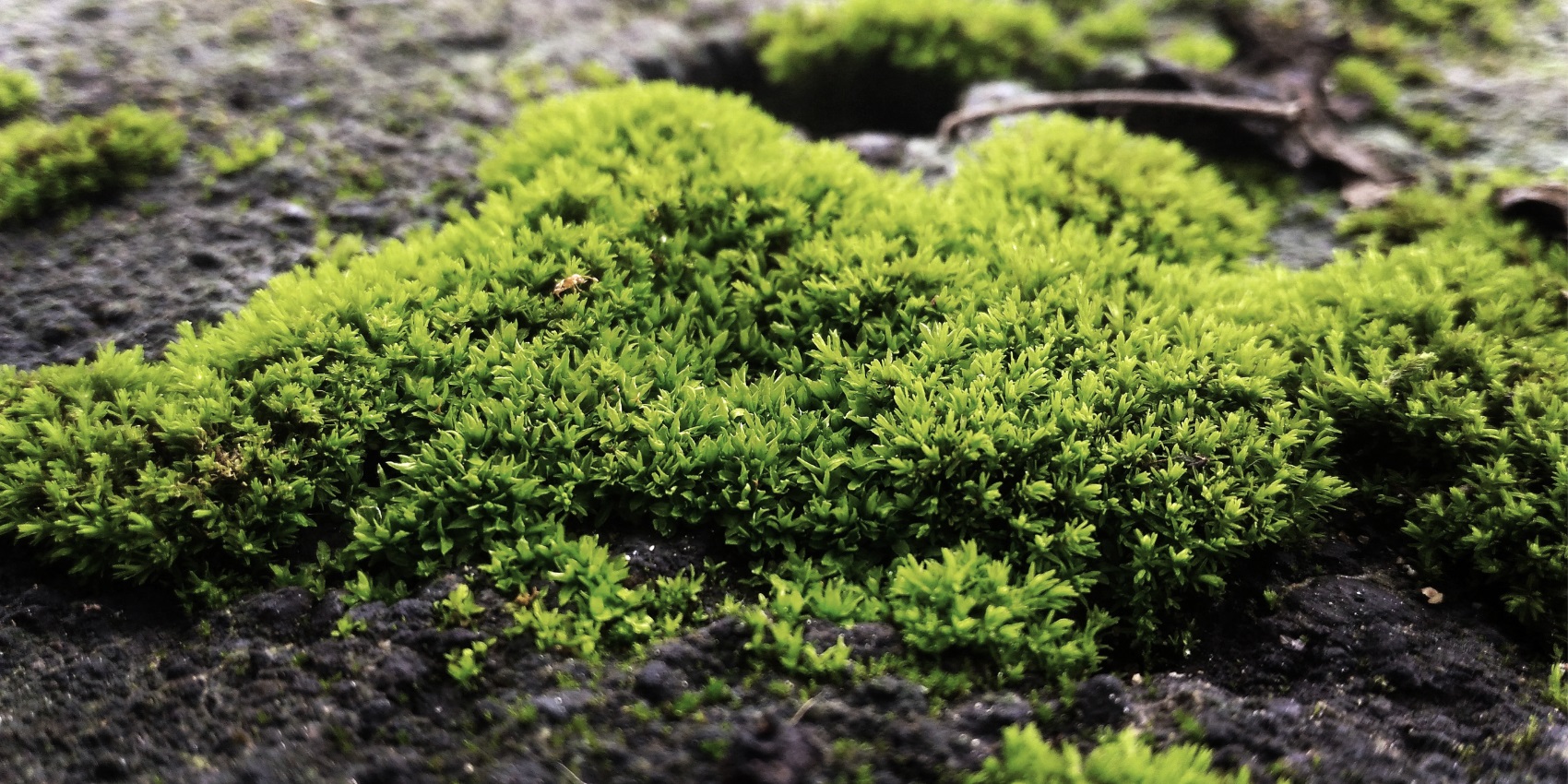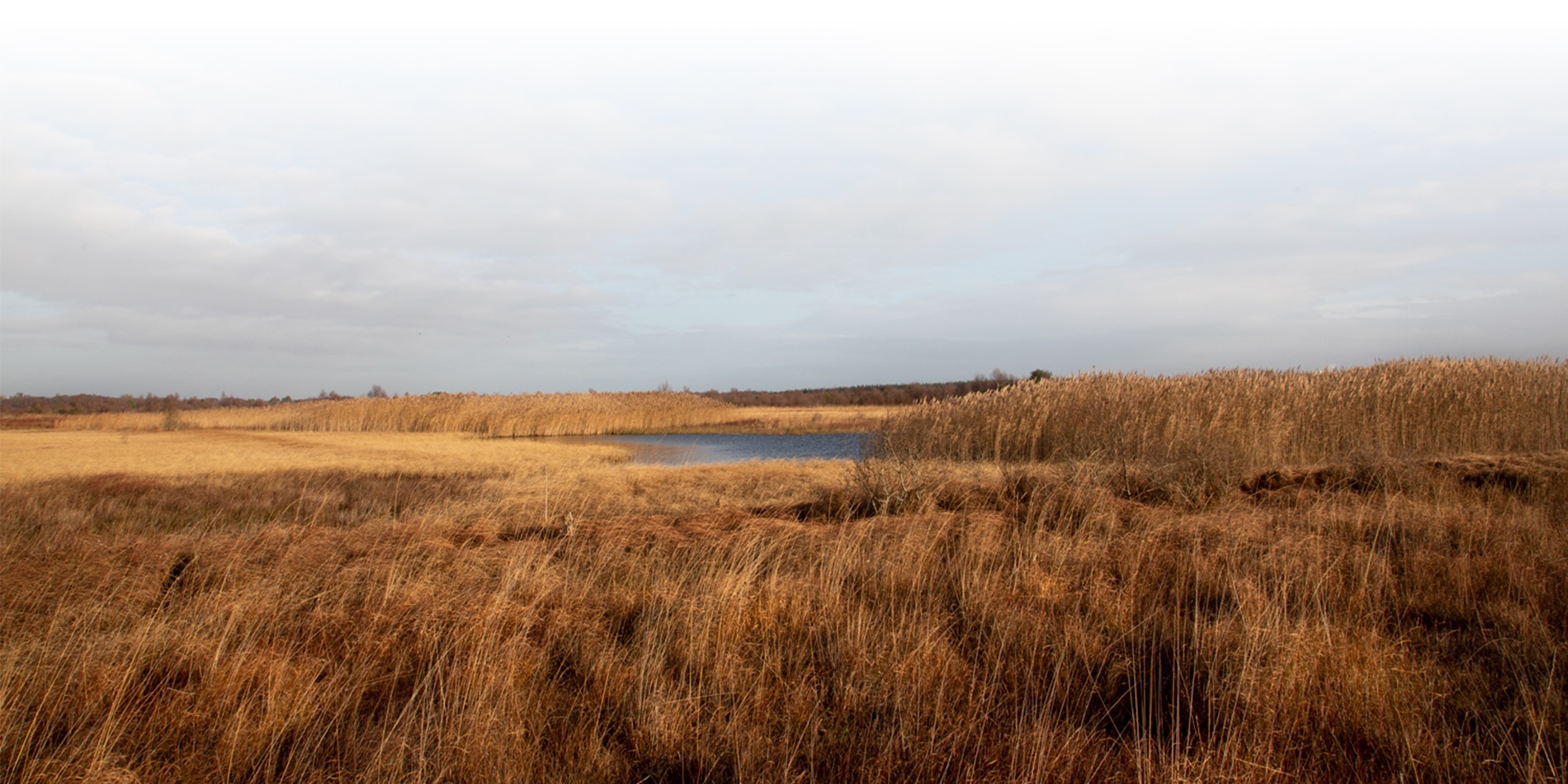From carbon source to carbon sink
Peatlands are the earth’s largest store of land carbon. By protecting and restoring our peatlands, we’re protecting our climate.

Understanding carbon sequestration
Heat trapped in the Earth’s atmosphere is causing our climate to change. This heat can’t escape because it’s blocked by gases like carbon dioxide. We can help Earth’s atmosphere stop absorbing heat by removing carbon from the air. The process of removing carbon from the air is called carbon sequestration. Peatlands naturally ‘sequester’ carbon by absorbing it through plants and storing it in the ground.

Raised bogs can store carbon for thousands of years
The different types of mosses that grow on raised bogs, collectively known as ‘sphagnum’, are particularly good at absorbing carbon. When sphagnum decays, it forms peat, and the peat can store carbon for thousands of years.

Restoring peatlands for national decarbonisation
As part of our role in leading climate action, we’ve launched the Peatland Restoration Plan,
which is designed to protect the 100 million tonnes of carbon already stored in our bogs and
help sequester more carbon as naturally functioning peatland ecosystems develop.
We’ve ended peat harvesting
Peat harvesting releases carbon into the atmosphere, so we ended peat harvesting in 2020. We’re now restoring bogs to maximise their carbon capture and storage potential. Where bogs cannot be restored, we’re rehabilitating them to unleash new potential for biodiversity and public enjoyment. Some rehabilitated bogs are suitable for wind and solar energy farms, which reduce national reliance on fossil fuels.
More about peatland rehabilitation